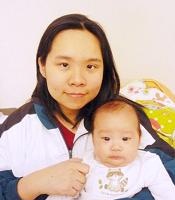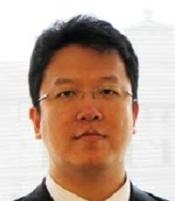
Szu-Yuan Chou
PhD Student, Mechanical Engineering
Szu-Yuan earned her Bachelor's degree from National Taiwan University with a double major in both Animal Science and Engineering Science. She received the Research Award by the National Science Council of Taiwan government, as well as the Taiwan Minister of Education Fellowship, which is a competitive award with over 1,000 top applicants in Taiwan. After finishing her undergraduate studies, she joined the Department of Mechanical Engineering at Carnegie Mellon University. She has presented her findings at numerous conferences including Biophysical Society (BPS) Annual Meeting and Biomedical Engineering Society (BMES) Annual Meeting, as well as published her work in Biomaterials. In the LeDuc Lab, she focuses on linking mechanics to biochemistry using nano- and micro-technology, control theory approaches, and computational biology. She has developed a method to control the localized interactions of cells with a polymer composite with alternating stiffness through soft lithography approaches. Based on this method, she is optimizing functionally engineered-tissues using information on cell-substrate interactions. Furthermore, she is also studying apoptosis (programmed cell death) using surface micro-topography

Lina González
PhD Student, Mechanical Engineering
Lina graduated from the Hunter College in New York with a major in Physics and minor in both Mathematics and Chemistry. At the Hunter College, she participated in several research programs, including Louis Stokes Alliance for Minority Participation, Minority Biomedical Research Support (MBRS), and Minority Undergraduate Research Fellowship (MURF). As a MBRS scholar, she worked in a nuclear magnetic resonance (NMR) laboratory where she examined the organic components of the solid electrolyte interphase (SEI) layer on Lithium ion electrodes. As a MURF scholar, she spent two summers at Caltech studying both take-off behavior and wing deformation of fruit fly using Robofly. Currently, she is studying Magnetotactic bacteria that possess an organelle called magnetosome. In this research, she is using these "tiny magnetic needles" residing inside these bacteria as biological sensors to specifically detect cracks and various other structural defects on the magnetic surfaces of submerged aquatic vehicles such as ships and submarine hulls. She is studying the response of magnetotactic bacteria to magnetic concentrators by fabricating NiFe and Co structures through photolithography and depositing a thin layer of NiFe and Co on a master mold. Homemade pair of Helmholtz coils produces a magnetic field that interacts with the microfabricated structures. The response of bacteria around the structures is quantified by analyzing real-time images of bacteria. Bacteria change orientation as they approach the fabricated structures with concentrated fields due to their geometries. She is guided by both Dr. Phil R. LeDuc and Dr. William C. Messner.

Melis Hazar Haghgoui
PhD Student, Mechanical Engineering
Melis received her Bachelor of Science from the Mechanical Engineering Department at Gazi University in Turkey. After graduation, she worked as a full time design and quality engineer at Maxflow Syphonic Drainage Systems. In 2010, she was awarded a scholarship from the Turkish government for her PhD studies (only 4 awards were selected out of >1000 candidates). She is interested in synthetic morphogenesis using embryos of Xenopus laevis. In the short term, she aims to control cell migration in Xenopus explants using micro fluidic systems. In the long term, she aims to control gene expression within these tissues to stimulate specific morphogenetic movements. The projects are conducted through a collaboration with Dr. Lance Davidson in the Department of Bioengineering at University of Pittsburgh. This research could provide new techniques that will facilitate the elucidation of multicellular dynamics in cancer metastasis, tissue regeneration, and stem cell differentiation at both the molecular and cellular levels.

John Kang
PhD Student, Computational Biology
John received his undergraduate degrees in Biomedical and Electrical & Computer Engineering from Duke University. John is a PhD student in the Joint CMU-Pitt Ph.D. Program in Computational Biology. He is also affiliated with the University of Pittsburgh-Carnegie Mellon University Medical Scientist Training Program (MSTP) and will follow up his Ph.D. studies by finishing his M.D. degree from the University of Pittsburgh School of Medicine. He is interested in the simulation of biomechanical phenomena. Specifically, he is investigating the response of actin filament cytoskeletal networks to mechanical stimulation, including stretching and shearing. He models focal adhesion and actin-binding proteins as nodes and connect these nodes with actin filaments. Currently, the model stretches a subset of these nodes and an algorithm was used to iteratively balance forces on all the nodes. He is co-advised by Dr. Russell Schwartz from the Department of Biological Sciences. His extracurricular interests are computer hardware, basketball, and video games.
In this photo, he is analyzing the response of a Thamnophis brachystoma to human tactile response near his old apartment near the Univ. of Pittsburgh. Photo credit: Matthew Zhang.

YongTae (Tony) Kim
PhD Student, Mechanical Engineering
Tony's doctoral research focuses on the integration of microfluidic systems and feedback control theory for lab-on-a-chip applications to biochemistry and developmental biology. Specifically, he created technologies to examine multicellular systems, which are challenging and critical for cancer treatment, embryonic development, and tissue regeneration. Such technologies also have important implications for studies of stem cells, regenerative tissue engineering, and cancer metastasis. Furthermore, since embryonic cells move to specific locations in an embryo to differentiate into specific organs during early developmental stage (e.g. gastrulation), investigation of multicellular dynamics in embryonic development could shed new light on cell motility and enhance the understanding of metastatic migration in cancer cells. To probe biochemical signaling of multicellular systems, he has developed a new microfluidic methodology that uses precision pressure regulation to control a laminar flow interface in a microfluidic channel, which allows spatiotemporal manipulation of cellular chemical environments for a long period of time. He has examined the effect of the geometry of a three-dimensional (3D) tissue on the stimulation profile using computational fluid dynamics, which provides the range of exploitable flow rates that is critical for precise stimulation and distinct pattern creation. Based on these approaches, he has investigated the stimulus-response function of a signaling network that comprised of a hormone dexamethasone (DEX) and a protein-based biosensor that reports the level of dexamethasone by relocating green-fluorescent proteins (GR-nuc-GFP) from the cytoplasm to the nucleus.

Robert Steward Jr
PhD Student, Mechanical Engineering
Robert is originally from Chicago, IL. He received his Bachelors of Science in Mechanical Engineering from Clark Atlanta University in the Spring of 2007. Prior to the start of his doctoral research program, he participated in projects supported by the Clark Atlanta University in the Department of Chemistry, Physics, and Engineering, High Performance Polymer and Composites Laboratory, and National Oceanic and Atmospheric Administration. He began his doctoral research in the fall of 2007 in cellular mechanics in the Department of Mechanical Engineering. His current research focuses on how cells dynamically alter their endogenous and exogenous environments in response to coupled modes of mechanical stimulation. He has created a technique that provides the ability to probe cell behavior by multiple coupled modes of mechanical stimulation because this has implications in both physiology and pathology. This novel technique is able to exert fluid shear stress, uniaxial strip stretch, or both simultaneously on single cells attached to an elastomeric membrane. Based on this approach, he has probed the response of cellular structural remodeling by observing actin cytoskeleton. Furthermore, he will probe the response of cells to their extracellular environment, which would allow for a comparison of how cells adapt internally and externally to a mechanically diverse environment.

Mary Beth Wilson
PhD Student, Biomedical Engineering
Mary Beth is currently working towards a doctoral degree in Biomedical Engineering. She received her undergraduate degrees in Materials Science & Engineering and Biomedical Engineering from Carnegie Mellon University (CMU) in 2007. During her undergrad years, she was involved in dental research related to biomineralization and dentin phosphoproteins. Upon graduation, she moved to Birmingham, AL to join the DMD/PhD dentist-scientist training program at the University of Alabama at Birmingham. During her 2 years in the training program, she performed research, under the mentorship of Dr. Mary MacDougall, exploring the functionality of bone morphogenetic proteins (BMPs) as +/- regulators of dental pulp mineralization. In addition, she completed the full medical sciences coursework, which has equipped her with a unique medical perspective. After realizing that her intellectual passion lies in innovative engineering research, Mary Beth returned to CMU in Fall 2009 to pursue doctoral training in preparation for a future career in engineering academia. In her research, Mary Beth aims to engineer functional 3D synthetic vascular networks, as a means to help solve the donor organ shortage problem. Tissue engineering is often limited to thin layer and avascular tissues (i.e. skin and cartilage) due to a lack of means to vascularize metabolically demanding cells that comprise complex organ tissues. Bioengineered vasculature from the micro- to macro-scale would provide an enabling technology for vital organ engineering. To solve this challenge, the advantages of three separate approaches will be used to develop artificial capillary networks with close parenchymal contacts: microfluidic technology enabled by mechanical micromilling, high resolution control using direct cell placement with thermally responsive polymers, and biochemical regulation. This interdisciplinary project is being pursued in collaboration with Dr. Yadong Wang (Univ. of Pittsburgh), Dr. Donna Beer-Stolz (Univ. of Pittsburgh) and Dr. Burak Ozdoganlar (CMU).

Yukai Zeng
PhD Student, Mechanical Engineering
Yukai earned his B.Eng. degree (Honors) in 2008 from the Nanyang Technological University, Singapore. From 2008 to 2009, he was employed by the Institute of High Performance Computing (IHPC) as a research officer and worked on predictive computational models of cancer cell mechanics. In 2009, he was awarded the A*STAR Graduate Scholarship to pursue a Ph.D at Carnegie Mellon University. He is currently a Ph.D graduate student co-supervised by Dr. Philip R. LeDuc and Dr. Keng Hwee Chiam from the A*STAR IHPC (Biophysics Department), Singapore. His is interested in computational cancer biomechanics, bio-inspired design for cancer therapy, patho-biotechnology, and the design of engineered systems for biomechanic studies. He engineers fundamentally simple yet elegant systems to study biological problems. Specifically, he is interested in the cellular formation of circular dorsal ruffles (CDRs) upon stimulation with platelet derived growth factors (PDGF). Specifically, he found that a higher substrate stiffness decreases the percentage of cells that contains CDRs, but increases the average persistence time of CDRs. To explain the change in persistence time of the CDRs with respect to varying PDMS substrate stiffness, he has developed a model based on reaction-diffusion partial differential equations of various proteins in the PDGF stimulated cell signaling cascade.
